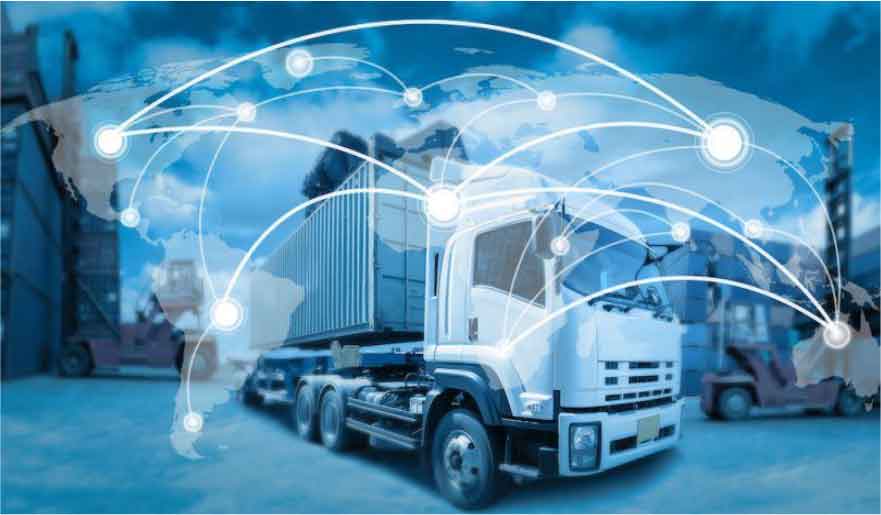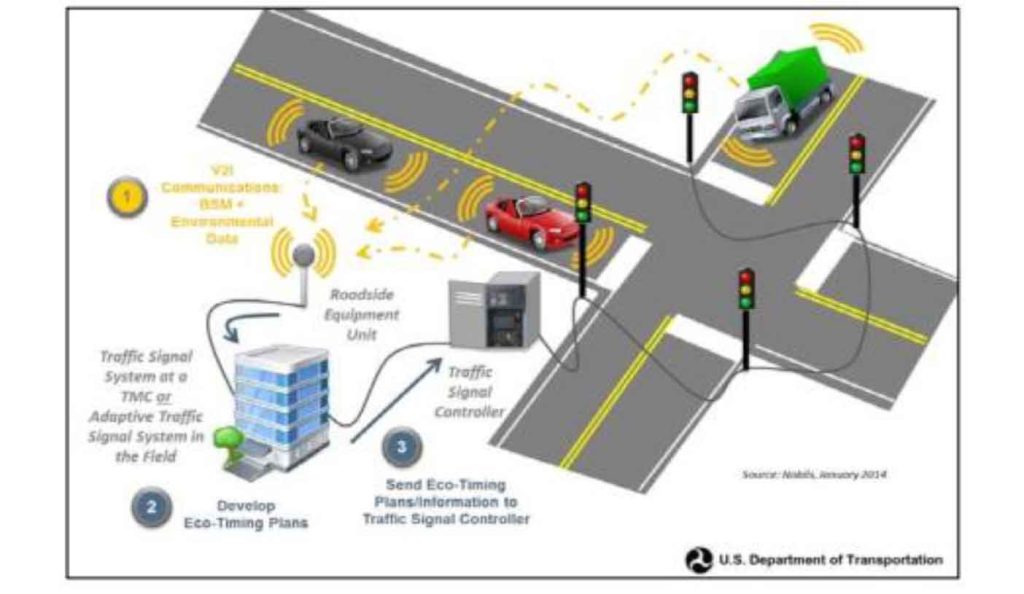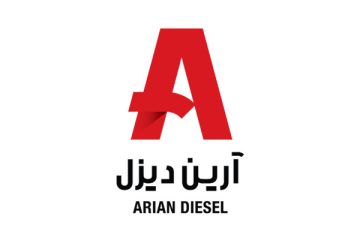A connected car is a car that has access to the Internet and is usually equipped with a local wireless network. Connected car technology enables wireless communication between cars, transportation infrastructure, devices and road users with cars equipped with this technology. In this section of act group, we analyze connected car technology.
This technology, which is based on new intelligent systems of transportation and communication technology, is rapidly developing in different countries.
Introduction
A connected car is a car that has access to the Internet and is usually equipped with a local wireless network.
The technology of connected cars makes it possible to establish wireless communication between cars, transportation infrastructures, devices and road users with cars equipped with this technology.
This technology, which is based on new intelligent transportation systems and communication technology, is rapidly developing in different countries.
The use of this technology improves network traffic parameters, increases safety, reduces travel time in dense networks, reduces pollutants and social benefits; As in previous studies, the effect of using this system has been estimated to reduce accidents caused by human error by 90%.
General Motors was the first automaker to market the first connected car features in 1996 with OnStar in the Cadillac Dalet, Seville and Eldorado.
OnStar was developed by GM working with Motorola Automotive. The main goal was safety and emergency assistance during an accident; The sooner medical help arrives, the more likely it is that drivers and passengers will survive.
At first, OnStar was voice-only, but when mobile phone systems were added, the system was able to send GPS location to the call center.
After OnStar’s success, many automakers came up with similar safety programs, usually with a free test for a new car and then paying a subscription after the test.
Since 2002, the US Department of Transportation has developed research on the feasibility of accident avoidance systems using wireless communications.
Car manufacturing factories also work with the Department of Transportation in this regard and are implementing projects to increase traffic safety.
The aforementioned collection presented more than 75 scenarios for the use of connected cars, and finally 8 application scenarios with the most potential were selected for further studies; Red light warning, curve speed warning, brake light warning, collision prevention warning, collision warning with the car in front, left turn assistant, lane change warning and stop lane assistant constitute the mentioned scenarios.
In the summer of 2014, Audi became the first manufacturer to access access points Wi-Fi 4G LTE and it was the first mass production of G LTE by General Motors.
One of the important factors in the efficiency of connected cars is the coverage of wireless communication.
But measuring and evaluating the coverage of wireless communication in different sites is a difficult task because various factors are effective in this matter.
In 2015 Bidura and his colleagues reported in a research that the use of connected car technology can lead to a 20% reduction in total travel time, a 6-11% improvement in traffic safety, and a 5-16% saving in fuel consumption.
Types of communication in the system of connected cars
These systems are divided into three general groups based on the type of wireless communication:
- V2V (1): Vehicle To Vehicle
- V2I (2): Vehicle To Infrastructure
- V2X (3): Vehicle To Other
Most of the developed V2I and V2V systems are based on DSRC shortwave communications. Many countries and studies have focused on V2I and on the basis of road traffic safety information.
Cars equipped with V2V system can use the information of cars near them that are equipped with this system and identify traffic information at the moment such as the speed and local position of the car near them.
The use of V2V technology can prevent the collision of two cars in a row.
V2I technology improves
the safety of moving vehicles through wireless communication with highway infrastructure. The third type of these systems refers to any type of transportation communication such as car to pedestrian V2P and car to motorcycle V2M.
Some transport companies are trying to develop V2P system to improve the safety of pedestrians. The V2P system is designed to reduce the collision potential between cars and pedestrians and cyclists.
Cars equipped with wireless communication technology can identify pedestrians and avoid collision with them.
It is also possible to warn pedestrians about the possibility of an accident through DSRC devices such as smart phones.
In general, the use of V2M and V2P systems is less developed, but the use of V2V and V2I systems is more developed, and field experiences have been reported regarding the improvement of the condition of the road network if these systems are used.
Components of a connected car
The parts of a connected car can be divided into two categories: hardware and software:
a) Hardware
The required hardware can be divided into built-in or built-in systems. Built-in communication boxes often have a dedicated Internet connection via a GSM module and are integrated into the car’s IT system.
Although most connected cars in the US use a GSM carrier or AT & T with a GSM SIM card like Volvo’s.
But some cars, like the Hyundai Blue Link system using Verizon Wireless Enterprise, use a non-GSM CDMA carrier.
Most of the input devices are connected in OBD (Diagnosis Port) for power and access to vehicle data and can be divided into two types of connection:
- hardware on customer smartphones to connect to the Internet or hardware establishes a dedicated Internet connection through a GSM module.
All forms of hardware have common uses as drivers. Built-in solutions are often guided by safety regulations in Europe for an automated emergency call.
Acquired devices typically focus on one customer segment and one specific use case.
b) Software
The software part of connected cars can be divided into 6 different categories.
- Mobility management: functions that allow the driver to reach the destination quickly, safely and in a cost-effective manner (eg: traffic information, parking assistance, optimized fuel consumption).
- Vehicle management: functions that help the driver reduce operating costs and improve ease of use.
- Safety: functions that warn the driver of external hazards and the vehicle’s internal responses to hazards.
- Entertainment: functions including driver and passenger entertainment (for example: smartphone interface, WLAN hot spot , music, video, internet, social media and mobile office).
- Driver assistance: functions that involve partially or fully automated driving (for example: practical or automatic assistance in heavy traffic, in parking lots or on highways).
- Comfort: functions including the comfort and ability of the driver and the fit and comfort of the body parts in driving (for example: fatigue detection, automatic environmental settings to prevent driver warnings, medical assistance).
Application of connected car technology
The executive architecture of the reference of connected cars divides the use of connected cars into four general objectives safety, mobility, support and environment.
Safety applications can improve situational awareness and collision avoidance using wireless communication technology.
The safety applications of connected cars can prevent accidents and protect human lives by giving warnings of dangers and accident situations through wireless communication.
These security activities can be divided into two types of V2V and V2I communication.
Table 1: Application of connected cars in transportation security
pic
Applications provide real-time and multi-system traffic data for passengers, control agents and operators.
The US Department of Transportation has defined two specific uses of connected cars to improve mobility:
- Real-time data recording and management
- Dynamic displacement applications
Real-time traffic data can be collected from various sources and systems such as connected cars, mobile phones and infrastructure.
This data is used to manage transportation systems through displacement applications according to Table 2.
Table 2: Applications of connected cars in traffic management
pic
Advantages of using connected car technology
The development of connected car technology requires the expansion of all types of infrastructure communications, especially the wireless Internet network.
However, the implementation of this technology has improved the quality of the transportation system and has justified benefits in reducing life, financial, air pollution, and travel safety risks.
Given:
- Traffic waves
- Queues (length and duration of delay)
- Current output
- Difference and speed difference
- Average travel time
- Reliability
- Environmental effects
- Acceptance of changing news messages by users
- Safety effects
Companies active in the field of connected cars
Telenav
Telenav has developed integrated cloud platforms that add direct access to audio, navigation, personal environment controls for adjusting ventilation and seat heating to the display.
It’s all part of what Telenav CEO Kai Tang called the “battle for the fourth page” Televisions, phones and computers are screens one to three, and the car screen is the fourth screen for communication.
Sophisticated consoles that have facilities such as GPS navigation, the possibility of playing video and games, have replaced it.
In the next step of the evolution of in car entertainment, the ability to connect the car with smart devices and services will emerge.
For example, Apple’s Car Play allows access to Spotify, Pandora and a host of other audio apps in the car. It also allows drivers to make calls through the console.
Bransys
Bransys helps heavy fleet managers track millions of trailers on the road by building and developing the EZ to Track platform.
In addition, they monitor the condition of the trailer cargo through sensors and at the same time control and monitor the temperature for sensitive cargo such as fruits and vegetables.
(It can be said that the company’s focus is on “fleet management” through the development of connected car technology).

Figure 1: Trailer under connected network control
Parqex
American drivers spend an average of 17 hours a year looking for parking, and it is likely to be the same in crowded Iranian cities like Tehran.
Reducing the time to find a parking space reduces wasted time, fuel and also reduces pollutants.
Parqex Also, in this market, it has focused on communication between private parking lot owners and parking spot seekers.
With the Internet of Things, there is no longer a need to share the parking key or leave the doors open, but the network manages the opening of the doors and access for those who have paid the fee. Internet connected cars.
Progress
One of the big promises expected from the development of connected car technology is the prediction of maintenance time.
Collections of computer chips and sensors placed throughout the connected car collect performance data.
This data is processed in the cloud to predict when a part needs maintenance before it becomes completely useless.
In a truly connected environment, the driver can even send a maintenance alert to the manufacturer or mechanic in question.
Company Progress From The emerging concept of machine learning It uses its anomaly detection system.
By predicting problems, this technology helps car manufacturers to reduce their operating costs that arise from warranty issues and reduced customer satisfaction and loyalty.
In one case of using this company’s product, 92% of failures have been prevented and with timely warning, maintenance operations have been carried out.
(Therefore, the goal of this company to enter the technology of connected cars is to facilitate the repair process and predict car breakdowns).
Otonomo
Traffic is one of the problems of daily life in densely populated cities It is a waste of time and trouble.
A large number of Lot sensors in CCTV cameras and along highways and bridges constantly collect data that can be analyzed to identify possible congestion points and reduce traffic load by managing traffic flow.

Figure 2: Schematic of how to connect cars to control traffic flow
One way to improve such analysis is better and more data. One of the companies that creates a gathering and sharing platform Otonomo It creates a leading platform for connecting cars to the cloud.
The data that is shared on this platform helps to manage routes and respond to emergency situations that occur on the roads.
(So it can be said that this company focuses on creating and managing safer traffic through the implementation of connected cars).
Feasibility of implementing connected car technology
For the implementation of the connected car system, depending on the type of system, it is necessary to provide different infrastructures.
For example, the implementation of the V2I system needs to equip the road network with the necessary infrastructure for information transmission. Likewise, vehicles using the road network must have wireless communication systems.
An example of prioritizing systems for freight transportation at the intersection is shown in Figure 3, Figure 4 shows the architecture of connected cars and the interaction between the car and the controller.
Communication infrastructures must be installed in the body of the road network and the vehicle must have wireless communication systems.
Also, there is a need for a control and processing center that needs to be able to communicate between users and installed wireless communication systems.
The need to develop intelligent transportation systems, including the system of connected cars in the road network of Tehran metropolis, is not hidden from anyone.
In Tehran, more than 700 people die every year due to driving accidents. Most of these deceased are pedestrians and motorcycle riders, and the use of connected car technology can improve the traffic safety of pedestrians and motorcyclists in the road network.
On the other hand, the use of connected car technology can improve the dense network of Tehran and reduce the problems of traffic congestion and network crises, such as those on rainy, snowy days and nights, and holidays.
Obviously, these improvements can have a significant effect in reducing environmental pollution and fuel consumption.

Figure 3: How to give priority to cargo vehicles at traffic lights

Figurer 4
Conclusion
In this report, the concept of connected cars, its applications in urban traffic management, the introduction of businesses formed in this field and the feasibility of its implementation were discussed.
This technology is used to improve traffic safety, manage road congestion and reduce environmental pollutants.
Based on the studies, the use of this system in different cities of the world has had a significant positive effect on traffic indicators.
The basis of the use of these systems is the use of wireless communication technology, and it creates a connection and communication between the cars moving on the road, the car and the infrastructures installed on the level of the road, or the car and the pedestrians and cyclists nearby.
Considering the development of communication infrastructures in the country and especially in Tehran, the issue of using this technology in the road network of Tehran can be studied.
It is expected that by using these systems, traffic safety will be increased during off-peak hours and highway traffic density will be reduced during peak hours, and as a result, environmental pollutants and fuel consumption will be reduced.
It is obvious that considering the situation of density, pollution and high volume of urban trips in Tehran metropolis, the use of connected car technology is one of the effective management solutions for transportation and air pollution in Tehran metropolis.



0 Comments